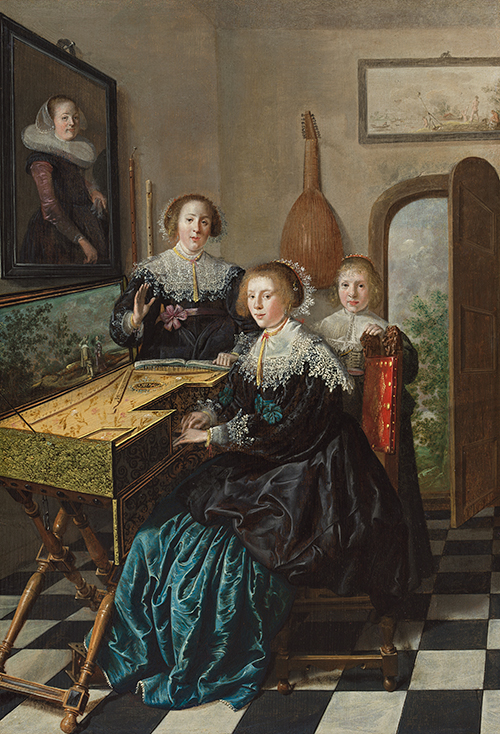A musical instrument is the anticipation of something. Sinuous strings and thin soundboards, carefully carved air ducts and hollow tubes, membranes stretched over wooden bodies: when you walk into the MFA’s Musical Instruments Gallery you can imagine the string plucked and resonating, the air column activated, and the membrane struck. More so, you can imagine the places and times in which material and sound coalesce into culture, community, and the joy of making music.
I remember, one day in August 2020, sitting alone in the MFA’s Musical Instruments Gallery, mask on, air filters humming. I was surrounded by musical moments waiting to happen. I wanted to share the sound of an early electric piano, listen intently with others to the melodies of tuned gongs, and share what it feels like to hear the warm tones of gut strings. The sounds musical instruments produce are invitations to a greater understanding of world-spanning cultural heritage. But at that moment, the gallery was silent.
I’m grateful we can once again gather around live music in the halls of the Museum. Art in Tune—a program I’ve been honored to be a part of since its founding in 2017—can finally return in person, and I’m eager to share sounds from around the world. Instruments, though, are not always representative of one place or time. They’re both transportable and malleable, and many are passed down over generations. The anticipation, or the potential energy of an instrument can change over time and space. One virginal (a small, harpsichord-like instrument with plucking mechanism) in the Museum’s collection is a perfect representation of those many stages of an object’s life, and its consecutive acts of becoming.
Joannes Ruckers the Younger was second in a line of perhaps the most influential harpsichord makers ever to take up the craft. His father, Hans Ruckers, began the trade in the late 16th century, and his family’s work has lasted well beyond their lifetimes. Instruments like this virginal, made by Joannes in 1620 and likely used in the upper-middle-class homes of Antwerp, were often reworked and altered over the centuries to accommodate particular moments in the musical lives of its players. Today, we can catch glimpses of its life in use.

A hundred or so years after it was built, the virginal was most likely still in the Low Countries, and still a working instrument. However, its potential needed to conform to new musical practices. To expand its range, its walls were cut away and extra notes were added to the treble and bass. This and other alterations likely kept the instrument in use for a great deal longer, and helped it realize a new potential.
Move forward almost two centuries more, and we find the virginal again, at the beginning of the 1900s. At nearly 300 years old, it was shipped across the Atlantic to the United States, where it landed at Boston’s Chickering and Sons Piano Company. This modern, industrial company had recognized a growing trend in the United States and Europe to recreate Renaissance and Baroque performances. In addition to sourcing musical scores and treatises on style and technique, a historically informed performer needed to build or restore historical instruments. So in 1906, Chickering and Sons hired Arnold Dolmetsch, a pioneer musician and builder in this movement. In his first year at the company, Dolmetsch restored the Ruckers virginal.
Throughout the acts of this instrument’s life, it has retained the heartbeat of potential. Even after its type had fallen into disuse, it participated in the 20th-century revival of “old” European music. What stands now in the MFA’s Musical Instruments Gallery is a unique product of all these acts. It’s not quite ready to realize what Joannes Ruckers would expect to hear, not prepared to perform in an 18th-century home, and it’s also no longer even what Arnold Dolmetsch constructed. Instead, it is layers of all these moments and spaces. What we’ll have the opportunity to hear at Art in Tune is an instrument molded by 400 years of time and place.
Hear Joannes Ruckers the Younger’s virginal and other instruments from the MFA’s collection at Art in Tune, Friday, April 8, 2022, from 6 to 8 pm.
